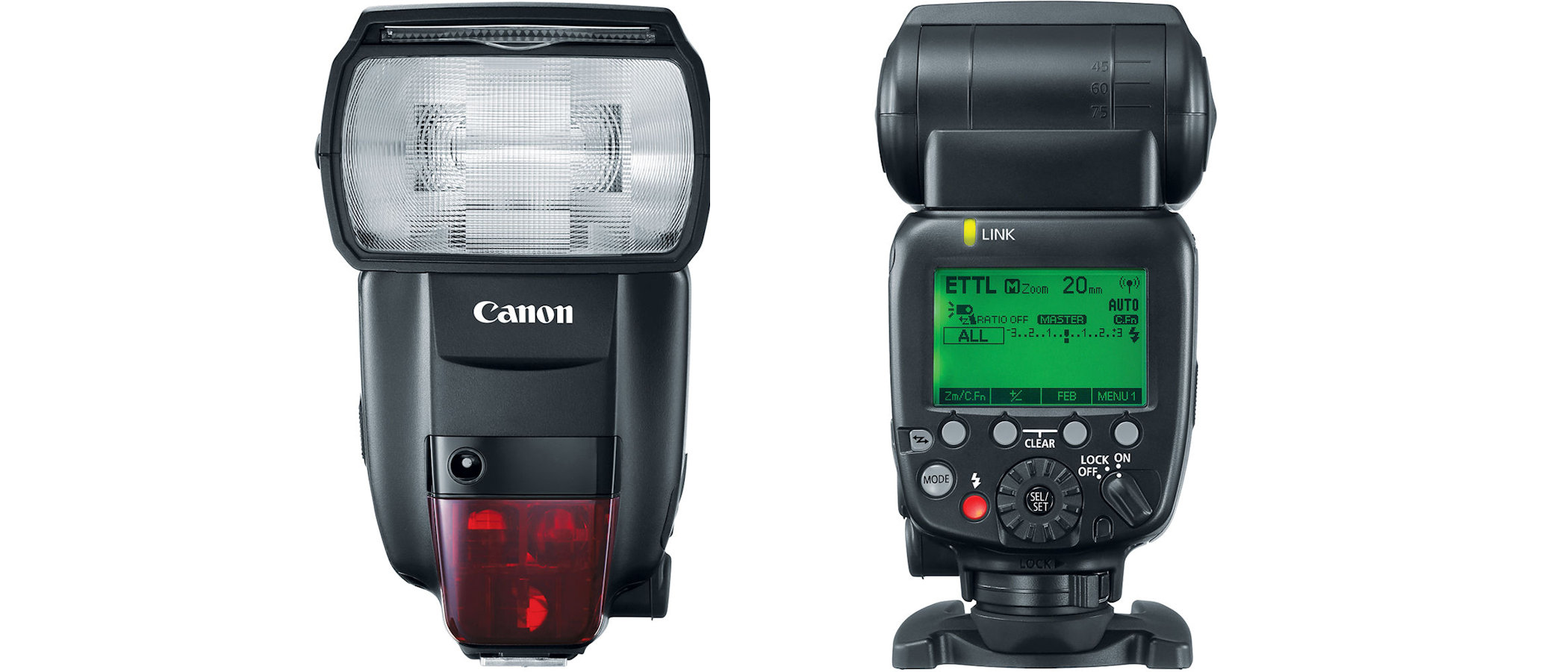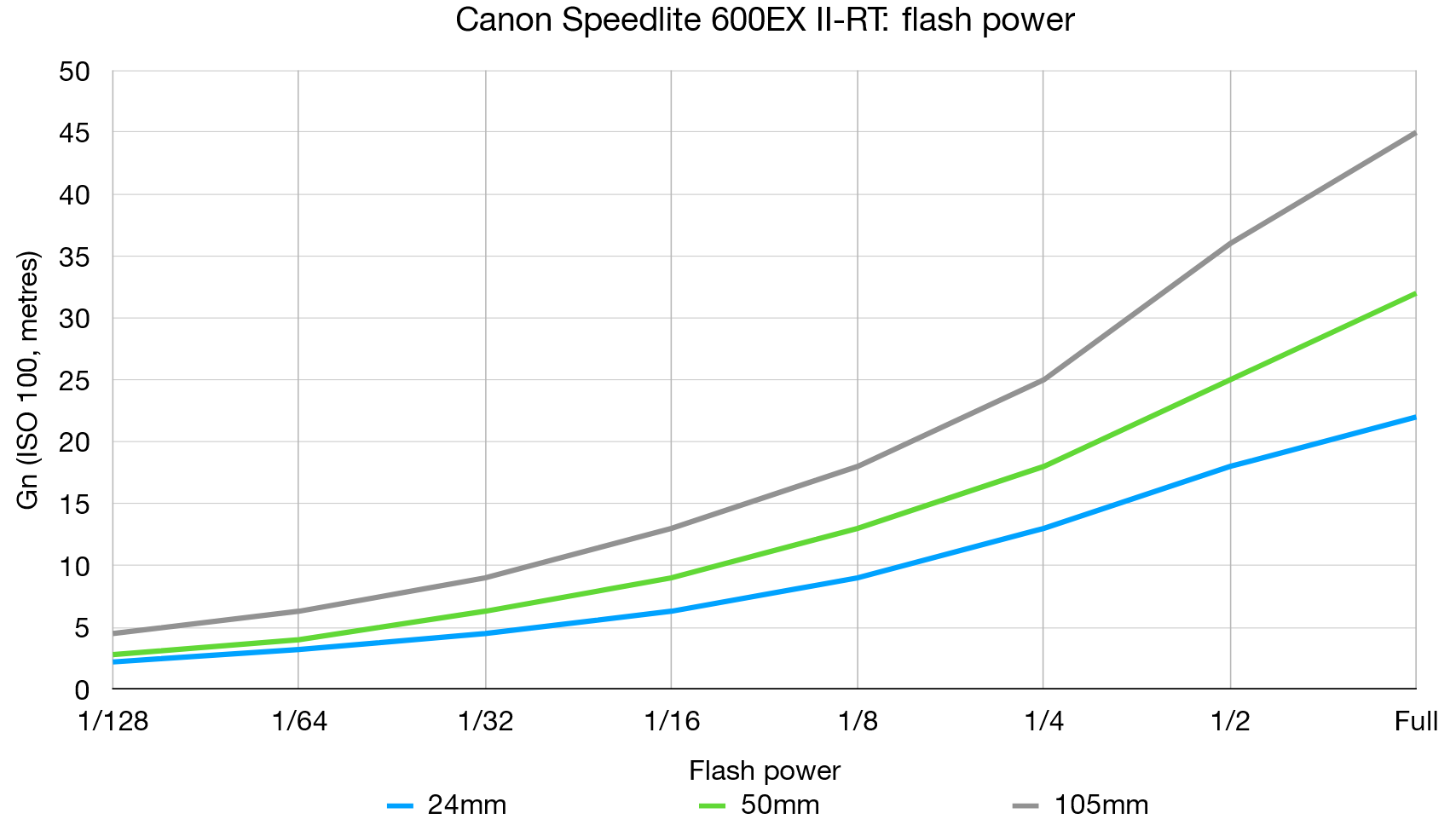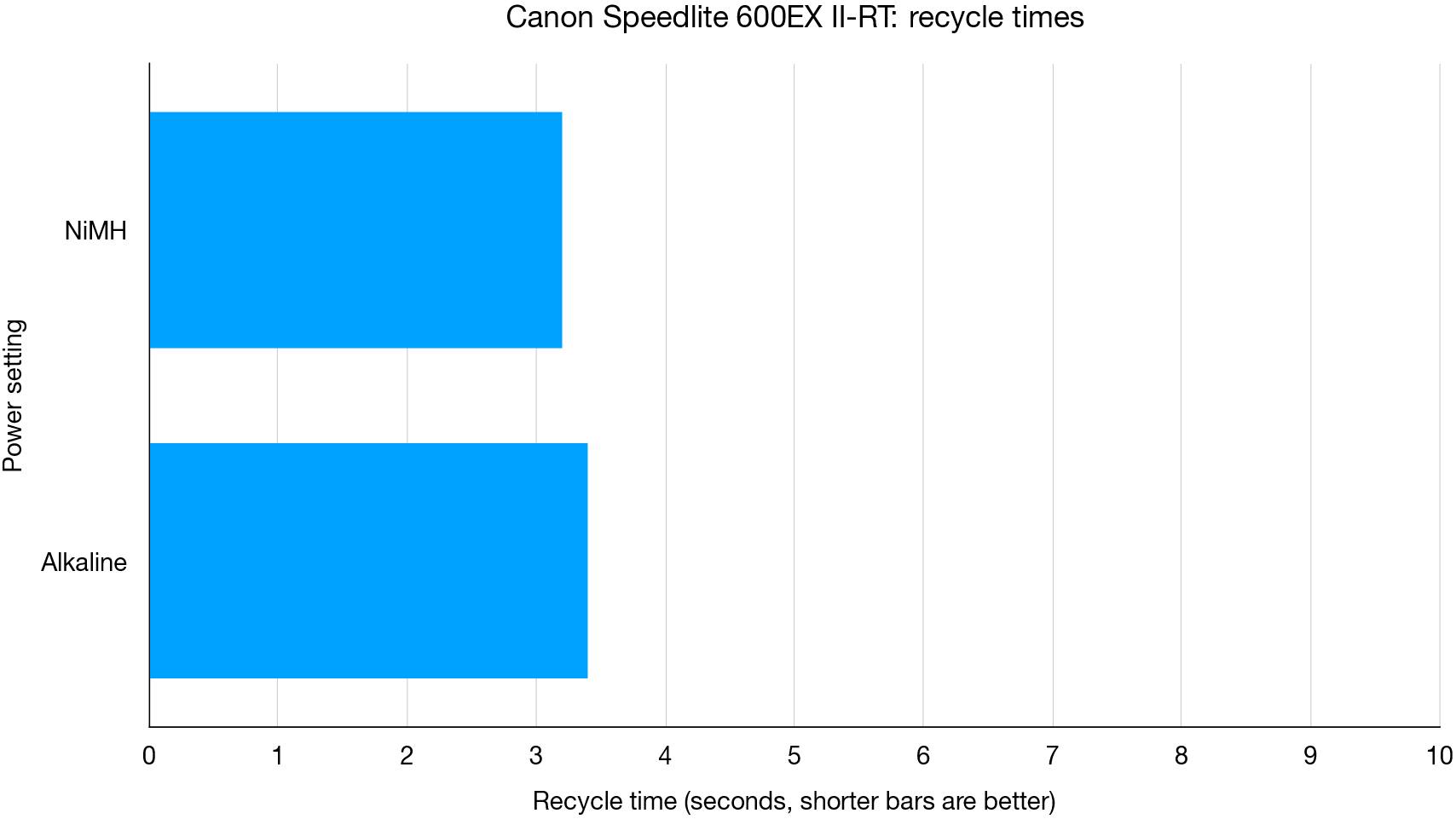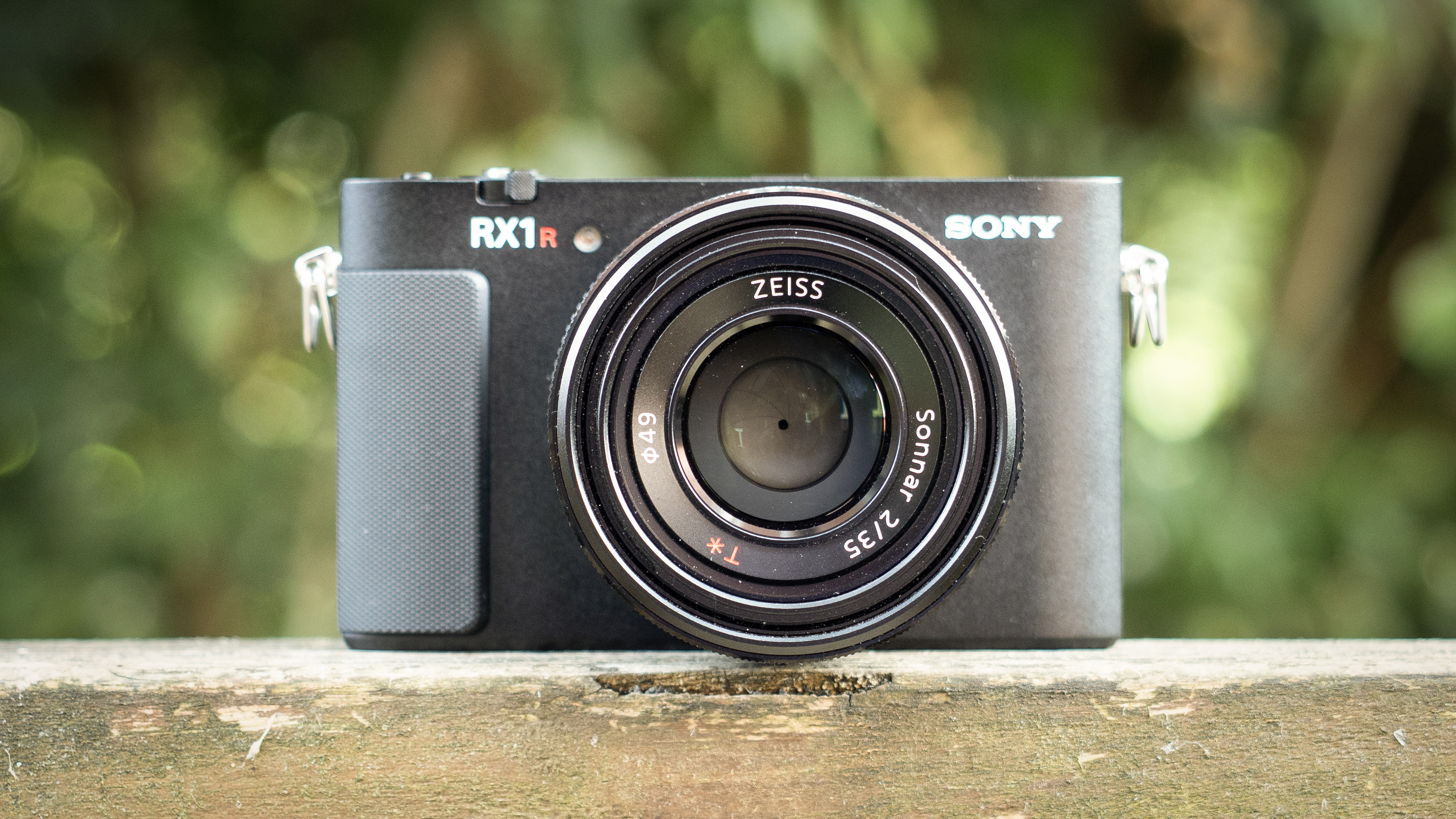Digital Camera World Verdict
The Mark II edition of this flashgun boasts an impressive feature set and high-end performance. Indeed, it was Canon’s range-topping model until it was eclipsed by the Speedlite EL-1, which costs about twice the price. It has fully pro-grade build quality with a weather-sealed mounting foot, a mighty 20-200mm zoom range and a built-in RF (Radio Frequency) transceiver that enables wireless master/slave triggering. However, some similarly feature-rich, independently manufactured flashguns like the Hahnel Modus 600RT Mk II and Godox V860III are better value for money, at around half the price.
Pros
- +
Pro-grade build quality
- +
RF + optical master/slave
- +
20-200mm zoom range
Cons
- -
Dated control panel
- -
Recycling could be faster
- -
Pricey to buy
Why you can trust Digital Camera World
The pro-grade Canon Speedlite 600EX II-RT is bigger, tougher and more powerful than any of Canon’s other Speedlites apart from the EL-1. It has a weather-sealed construction, complete with a weather-sealed mounting foot, and is designed from top to toe to meet the expectations of professional photographers.
Specifications
Dedication: Canon
Gn, ISO 100, max zoom (m / ft): Gn 60 / 197
Bounce range: -7 to 90 degrees
Swivel, left / right: 180 / 180 degrees
Zoom Range: 20-200mm
Manual Power Settings: 1/1 to 1/128
AF-assist beam: Red lamp
Wireless: RF + optical master / slave
Additional Flash Modes: HSS, RC, SS, Strobe
Dimensions (W x H x D): 80 x 143 x 125 mm
Weight (excl batteries): 425g
Key features
As with the original 600EX RT, the Mark II features a built-in RF (Radio Frequency) transceiver. This boosts the range of master/slave communication between multiple ‘RT’ flashguns to as much as 30m, compared with about 10m for a conventional infrared connection. It has the same pro-grade standard of weather-sealed construction but adds extra speed and stamina.
The Mark II is redesigned to enable longer periods of continuous shooting, without running into overheating problems. The number of flashes from a set of batteries is also increased by as much as 50 per cent and, as with most pro-grade flashguns, an external power pack is available. This comes in the shape of the Canon CP-E4N Compact Battery Pack, which improves recycling speeds and increases the number of available flashes, but holds eight AA batteries rather than being a Li-ion battery pack.

Included accessories comprise a diffusion dome, two colored filters, a mini-stand and soft case. The flashgun itself has a powerful Gn 60 rating and a versatile head that covers a bounce range of -7 to 90 degrees and full 180-degree swivel to both the left and right. The automated, motorized zoom range is also very generous at 20-200mm. As usual in up-market flashguns, there’s a retractable catchlight panel and wide-angle diffuser, plus a red AF-assist lamp.
Canon’s full-frame DSLRs don’t have a pop-up flash, which would be useful for triggering an off-camera flashgun. To make use of the built-in RF communications of the 600EX II-RT when using it on it off-camera, without an additional master flashgun in the hotshoe, Canon offers an ST-E3-RT Speedlite Transmitter.
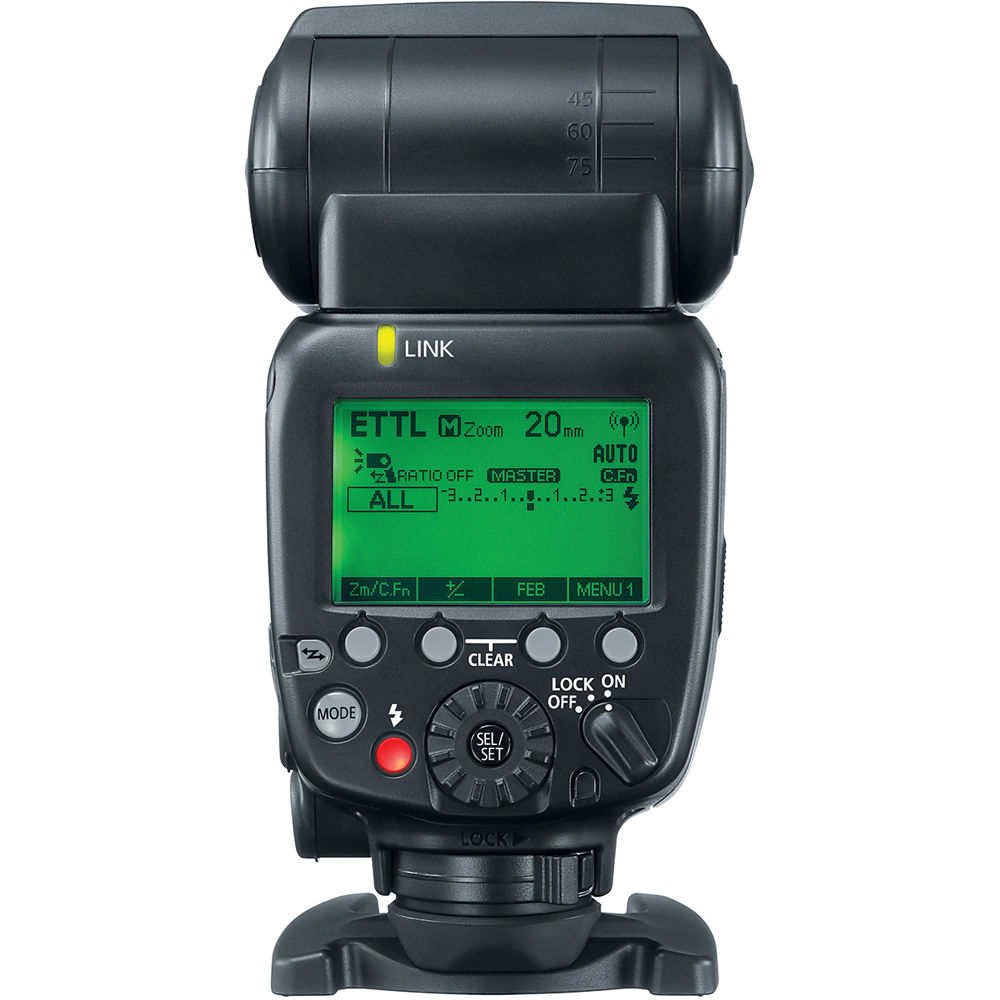
Around the back, the layout of the control panel and illuminated LCD screen is virtually identical to that of the original EX600 RT flashgun. The upper row of context-sensitive menu buttons and selection dial are fairly simple and intuitive, but look and feel rather dated compared with some newer designs.
Performance
In our tests, the Speedlite enabled unerringly accurate TTL metering and gave a powerful maximum output of Gn 45 (meters, ISO 100) at its 105mm zoom setting. Recycling speed after a full-power flash isn’t particularly swift at 3.2 seconds with NiMH batteries, but only slows slightly to 3.4 seconds when using alkaline cells.
Either way, recycling speeds and the maximum number of available flashes is far superior with some less expensive flashguns that use a rechargeable Li-ion battery pack. These include the Canon-dedicated versions of the Hahnel Modus 600RT Mk II and Godox V860III, both of which also feature built-in wireless RF transceivers but only cost around half the price.
Lab results
We test all available features for each flashgun that goes through out labs. To test power output, we used a Sekonic flash meter placed at a distance of one meter from each flashgun. We check the complete range of manual power settings, in one-stop increments. Based on a sensitivity of ISO 100, the figures correlate directly with the Gn (Guide number). The results are double-checked by taking shots of a gray card with the appropriate lens apertures and using the camera’s histogram display in playback mode. This is done for flash zoom settings of 24mm, 50mm and 105mm (in full-frame terms), where available.
We also check the accuracy and consistency of electronic/intelligent TTL (Through The Lens) flash metering, and the speed with which each flashgun can recycle to a state of readiness after a full-power flash, using both Ni-MH and alkaline cells, or a Li-ion power pack where supplied.
Power output:
The best camera deals, reviews, product advice, and unmissable photography news, direct to your inbox!
Compared with Canon’s mid-range Speedlites like the 430EX II-RT, there’s only a slight increase in maximum power output at short to medium zoom settings, but it eases ahead at 105mm and beyond, with an extended 20-200mm zoom range.
TTL accuracy (+/-EV): 0
As with other Canon Speedlites, TTL flash metering is consistently accurate in wide-ranging lighting conditions.
Recycling speed:
Recycling after a full-power flash is about half the speed of some similarly powerful flashguns that run on a rechargeable Li-ion power pack, and the Canon Speedlite EL-1 is more than three times as fast.
Verdict
The Mark II edition of this flashgun boasts an impressive feature set and high-end performance. Indeed, it was Canon’s range-topping model until it was eclipsed by the Speedlite EL-1, which costs about twice the price. It has fully pro-grade build quality with a weather-sealed mounting foot, a mighty 20-200mm zoom range and a built-in RF (Radio Frequency) transceiver that enables wireless master/slave triggering. However, some similarly feature-rich, independently manufactured flashguns like the Hahnel Modus 600RT Mk II and Godox V860III are better value for money, at around half the price.
Read more:
• Best camera lenses to get
• Best Canon lenses
• Best Nikon lenses
• Best Sony lenses
Matthew Richards is a photographer and journalist who has spent years using and reviewing all manner of photo gear. He is Digital Camera World's principal lens reviewer – and has tested more primes and zooms than most people have had hot dinners!
His expertise with equipment doesn’t end there, though. He is also an encyclopedia when it comes to all manner of cameras, camera holsters and bags, flashguns, tripods and heads, printers, papers and inks, and just about anything imaging-related.
In an earlier life he was a broadcast engineer at the BBC, as well as a former editor of PC Guide.
